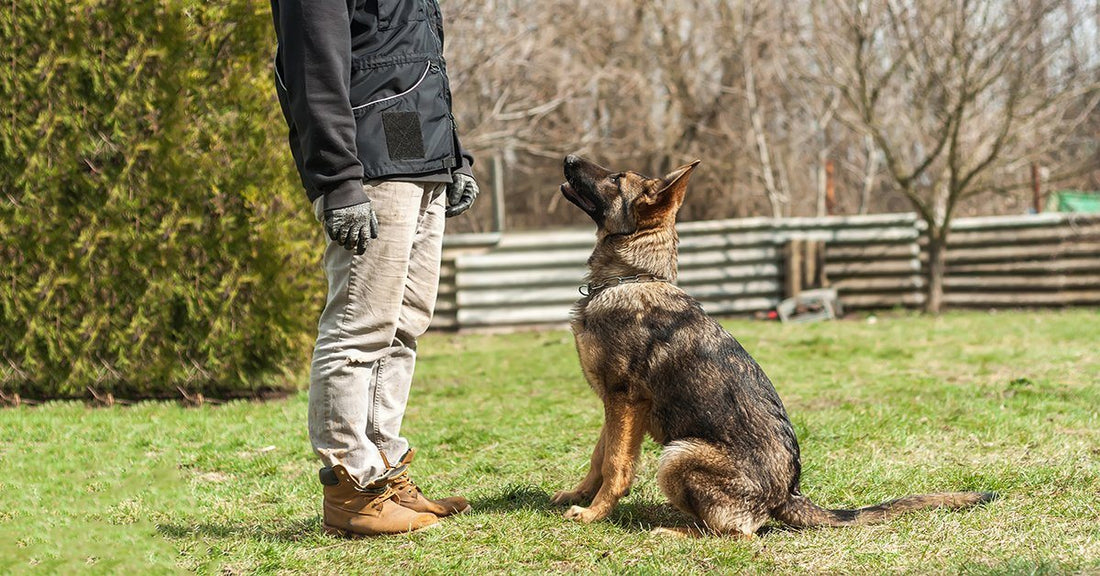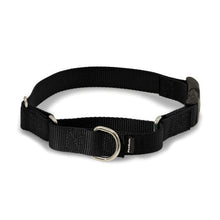Teach Your Dog To Back Up In 3 Easy Steps

Hind end awareness is very important for all active breeds, such as German shepherds. Hind end awareness helps prevent injuries by improving coordination. All dogs that like to run, play, jump, chase, or are involved in sports such as agility, need to be aware of where they are placing their hind limbs and feet.
Dogs are naturally highly aware of where their front paws land but if you’ve ever seen a dog wobble, fall, misstep, slide, etc., they may need help to improve their hind end awareness and balance. Teaching hind end awareness will help protect your dog from injuring their joints, ligaments, and back when they are active.
One easy way to teach hind end awareness is by teaching your pup to back up. Not only will it improve their balance and strength, it is fun to teach and can easily build onto more complicated challenges, such as backing up over obstacles. It’s also a great form of exercise and can be used in many situations, such as when you really do want or need your dog to backup for some reason.
Teaching your dog to back up will also help your dog be more aware of their back legs and paws and were they put them. Teaching these skills to puppies will help improve their coordination from a young age. Another benefit of training this is that if your dog should ever be injured, they will already know the skill, which can be beneficial when rehabbing. Teaching your dog to back up can:
• Strengthen muscles
• Improve rear leg coordination
• Increase awareness of the rear legs and paws
• Help avoid injuries
• Improve overall training skills
What’s You’ll Need
Another great thing about training this trick is all you need is some space, your dog, some treats, and your clicker if you use one.
You Can Teach your Dog to Back Up in 3 Three Easy Steps:
Step 1:
Get some treats then go outside with your dog. Stand in front of your dog with your dog facing you. While standing in front of your dog, with the treats in your hand, step toward your dog until your dog takes a step back. As soon as you take a step back, mark the movement by saying “yes” or ‘click,’ (if you’re using a clicker) and reward your dog a treat.
Step 2.
After practicing step one a few times, add a command to the trick. Like before, stand in front of your dog. This time when you step forward and your dog steps back, say “back” (or whatever command you choose). You can also incorporate a hand signal if you want. As in step one, when your dog steps back, mark the behavior with a “yes” or a ‘click’ and reward your dog a treat. Practice a little every day until your dog masters this.
Step 3.
After your dog masters step two, move on to this step three. As before, stand in front of your dog. Without stepping forward, give the back command. When your dog steps back, mark the behavior by saying “yes” or a ‘click’ and offering a treat. If you are using a hand signal, offer it at the same time you issue the back command. If you dog does not step back, revisit step 2 by stepping toward your dog only this time, when your dog takes a step back, issue the back command to encourage their next step to be taken without you stepping forward. Keep practicing until your dog backs up with just the command or hand signal.
Helpful tips:
As your dog learns this trick, have them back up farther and farther from you. Then release them and call them back to you.
Your dog will probably back up at an angle. To help get their body lined up, have them back up next to a fence or a wall. This may take a little more practice but can be taught just like in steps 1 – 3.
Once your dog becomes a master at backing up, have them practice in unusual places, for example, ask them to back up in the car, onto the scale at the vet, back out of a room, put down obstacles and teach them to back up while stepping over them, and have them back up where there are distractions.
If your dog is a slow learner, or gets frustrated, keep training sessions short and positive. End training on a good note by having your dog do something easy like sit, so the session ends with a reward.
To keep it fun, ask your dog to back up and then throw them a toy to catch, or engage them in a game of fetch by throwing the ball the opposite direction.
We hope you enjoy these training tips. Please share with your family and friends.
























